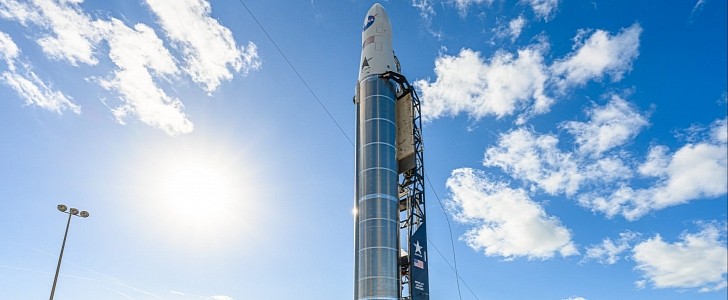On Monday, February 7th, Astra's Rocket 3.3 was supposed to blast off into space with four satellites for NASA's ELaNa 41 mission. However, as the countdown hit zero, the team decided to abort the mission.
Last month, the California-based company showed the world its improved Rocket 3.3 breathing fire at Cape Canaveral. Although the static fire test proved to be successful, there wasn't a date set for the launch since Astra was still waiting to receive its launch license from the Federal Aviation Administration (FAA).
Recently, the company got the green light to finally launch its rocket from Space Launch Complex 46. Initially, Rocket 3.3 was supposed to take off on February 5th. However, the Educational Launch of Nanosatellites mission, dubbed ELaNa 41, was delayed because "an unnamed range asset went out of service."
The second attempt was scheduled for today, February 7th. But Astra's Rocket 3.3 never left the launch pad. The team took to Twitter to announce that the reason was "a minor telemetry issue." The company says that it will "soon" provide updates regarding its new launch opportunity.
The upcoming flight is part of NASA's Venture Class Launch Services (VCLS) program, which awarded Astra a $3.9 million contract back in 2020 to launch small satellites – called CubeSats – into space. If successful, the payload carried by its 43-ft (13-meter) launch vehicle will be deployed from atop of the upper stage into Earth's orbit.
Three of the satellites, the BAMA-1, INCA, and QubeSat set to be deployed, were developed by students from the University of Alabama, New Mexico State, and University of California, while the fourth was designed by NASA's Johnson Space Center in Houston, Texas.
Once in space, the BAMA-1 will test a "drag sail" meant to allow a rapid deorbit of the satellite. INCA (Ionospheric Neutron Content Analyzer) is set to improve current space weather models, while QubeSat will test how space affects quantum gyroscopes. Finally, the R5-S1 will demonstrate a cost-effective way to build CubeSats.
Recently, the company got the green light to finally launch its rocket from Space Launch Complex 46. Initially, Rocket 3.3 was supposed to take off on February 5th. However, the Educational Launch of Nanosatellites mission, dubbed ELaNa 41, was delayed because "an unnamed range asset went out of service."
The second attempt was scheduled for today, February 7th. But Astra's Rocket 3.3 never left the launch pad. The team took to Twitter to announce that the reason was "a minor telemetry issue." The company says that it will "soon" provide updates regarding its new launch opportunity.
The upcoming flight is part of NASA's Venture Class Launch Services (VCLS) program, which awarded Astra a $3.9 million contract back in 2020 to launch small satellites – called CubeSats – into space. If successful, the payload carried by its 43-ft (13-meter) launch vehicle will be deployed from atop of the upper stage into Earth's orbit.
Three of the satellites, the BAMA-1, INCA, and QubeSat set to be deployed, were developed by students from the University of Alabama, New Mexico State, and University of California, while the fourth was designed by NASA's Johnson Space Center in Houston, Texas.
Once in space, the BAMA-1 will test a "drag sail" meant to allow a rapid deorbit of the satellite. INCA (Ionospheric Neutron Content Analyzer) is set to improve current space weather models, while QubeSat will test how space affects quantum gyroscopes. Finally, the R5-S1 will demonstrate a cost-effective way to build CubeSats.






